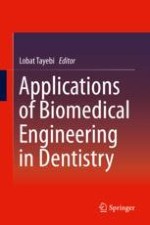2020 | OriginalPaper | Chapter
19. Whole Tooth Engineering
Authors : Leila Mohammadi Amirabad, Payam Zarrintaj, Amanda Lindemuth, Lobat Tayebi
Published in: Applications of Biomedical Engineering in Dentistry
Publisher: Springer International Publishing
Activate our intelligent search to find suitable subject content or patents.
Select sections of text to find matching patents with Artificial Intelligence. powered by
Select sections of text to find additional relevant content using AI-assisted search. powered by
